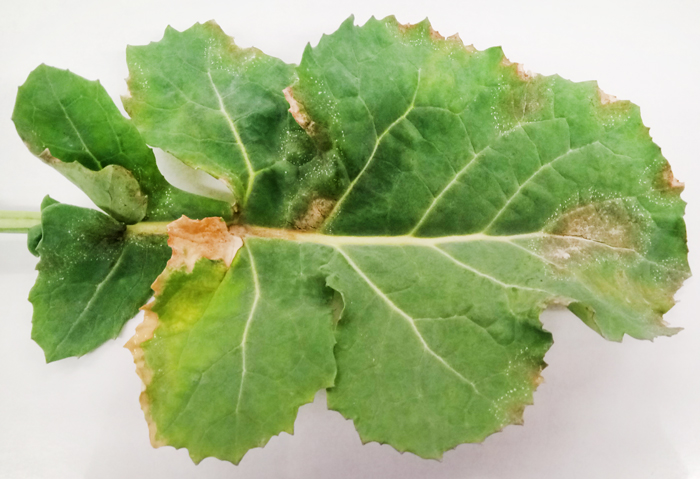Bayer’s SpotCheck initiative returns to help oilseed rape growers combat light leaf spot
22nd September 2020
Bayer’s SpotCheck initiative, which helps oilseed rape growers identify light leaf spot (LLS) and other diseases in the crop, will re-open to receive leaf samples from October. The previous season saw epidemic-levels of disease so growers are advised to be alert to early signs of LLS and apply fungicides early.
Bayer’s SpotCheck initiative, which helps oilseed rape growers identify light leaf spot (LLS) and other diseases in the crop, will re-open to receive leaf samples from October. The previous season saw epidemic-levels of disease so growers are advised to be alert to early signs of LLS and apply fungicides early.
The results from three years of SpotCheck, with over 1,800 samples of leaves tested, show that the disease is endemic across the UK and no longer confined to crops in the north. This is proving a wake-up call to growers in the south.
In 2019-20 there was a 19% increase in positive samples received by SpotCheck, and the warm, wet autumn, which favours disease development, was the likely cause for infections being detected in October, a month earlier than in 2018.
Light leaf spot is an airborne polycyclic disease. It is capable of several infection cycles a season and this is what makes it so hard to control, because the fungus repeatedly releases spores which infect new growth.
Philip Walker, Plant Pathologist at ADAS, who is involved with assessing samples sent to SpotCheck, explains that light leaf spot is very difficult to spot in the early stages of infection.
He says, “In its early phase, light leaf spot expresses itself as small white dots scattered across the top or underside of the leaf, where the fungus is erupting from the leaf surface. They can look like tiny grains of sugar but without a hand lens or microscope they are difficult to spot. Additionally, they may not appear on every leaf, or on every plant, so when walking the field, it is very easy to miss.
However, spotting the early signs of light leaf spot can improve decision making on when to spray, since fungicides provide mainly protectant activity.
Incubating leaves in a plastic bag at room temperature for two to three days can help the disease express itself on the leaf surface.
Ella Crawford, commercial technical manager at Bayer says, “Bayer’s trials last season showed that an autumn fungicide delayed the onset of disease, but that a spring spray was vital to provide protection for as long as possible. Plots that were untreated in spring saw disease much earlier than treated plots.
“The chemistry available is largely protective so needs to be applied at the early signs of disease. October/November timing is still important, and while growers in the south may traditionally focus on Phoma leaf spot at that time, ensuring you treat for light leaf spot too, will protect the crop over the winter period.”
Phoma is another disease that is on the march across the UK. Although usually more of a concern in the south, changing weather patterns over recent years have seen increasing infections in crops further north, including in Scotland.
Craig Simpson, Bayer’s commercial technical manager for southern Scotland says, “This past winter we didn’t have many days below four degrees centigrade, which contributed to high light leaf spot incidence from February onwards, but we also saw more Phoma identified in SpotCheck samples than before.”
Bayer’s Proline (prothioconazole) targets both light leaf spot and Phoma. Applying in early October, when infections start to come into the crop, and a second application in early to mid-November, where crop investment allows, will provide robust protection through winter.
“It is essential to get an early spring application on in good time,” says Ella. Applying Proline around February or March, depending on disease incidence, will give good protection. However, crop monitoring may indicate an earlier January application is required, especially in high risk, early-drilled crops, or if only one autumn spray was achieved.
To send in a leaf sample to SpotCheck for LLS assessment and diagnosis, request a sample pack from Philip Walker at ADAS, Boxworth, by calling 01954 268200.
- Collect 30 – 35 leaves from a single field of oilseed rape, by walking in a ‘W’ pattern (1 leaf from each plant).
- Fill out the short sample assessment form and send the leaves to ADAS in the freepost envelope supplied.
- ADAS will assess the leaves and provide a diagnosis via email within five working days.
For more on the SpotCheck initiative visit: cropscience.bayer.co.uk/spotcheck

